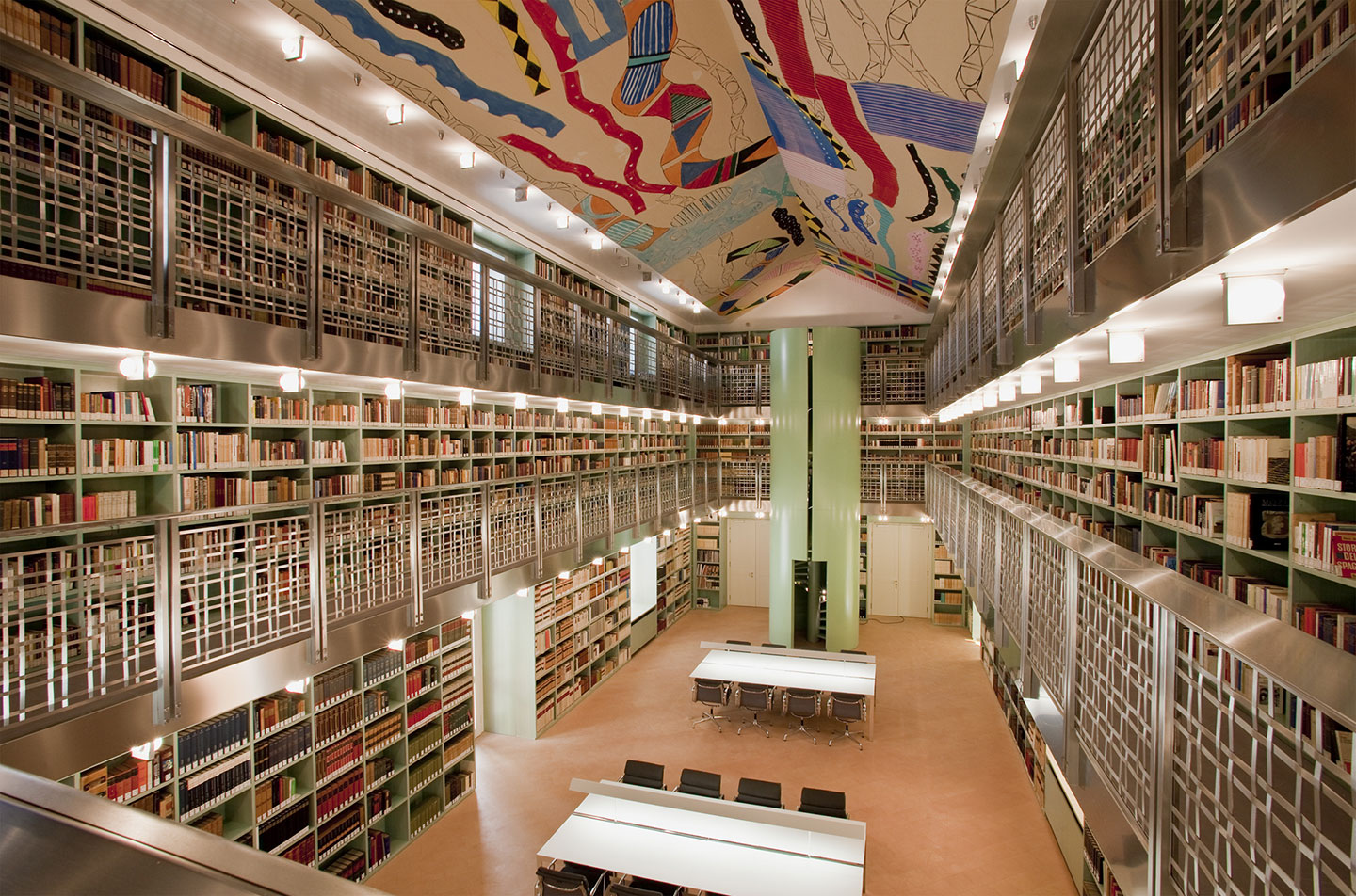
Palazzo Branciforte and the legacy of Gae Aulenti
The Branciforte Palace was opened to the public in May 2012. It covers more than 5,000 square meters and houses the executive offices of the Sicily Foundation within it, while also leaving space for the Foundation’s own Collections. The ground floor displays the archaeological collections. Continuing the tour in the building, the main floor houses the philatelic, numismatic and sculpture ones. There is also the Historical Library that holds volumes from the Foundation. From this point one can access the fascinating rooms of the Mount of Santa Rosalia, a rare still-visible example of the wooden composition, intended to host temporary art exhibitions.
The history of the building
The Branciforte Palace has a deep connection with the city of Palermo. The building was first a private residence of the Count of Raccuja, later it was purchased by the family from the Prince of Pietraperzia, Giuseppe Branciforte precisely, in the 17th century.
The original core of the palace, probably dating back to the 1500s, built between Bara, Lampedusa and Seminario Italo Albanese streets, had the main front overlooking the street that at the time connected the current main entrances.
The Count’s heirs, in the mid-17th century, initiated the expansion by obtaining from the Senate of Palermo the possibility of being able to incorporate the street in front.
By the beginning of the next century, having completed the works that almost doubled the surface area, the Raccuja Palace became one of the most sumptuous patrician residences in the city, the only one that did not allocate part of the space for the opening of workshops in order to derive a profitable lease.
The government proposed in 1801 to the Branciforte family the concession of the entire building to the Senate of Palermo to make the new headquarters of the Monte della Pietà for the Pignorazione, which required more space to guard the ever-increasing amount of pledges due to the difficult economic situation of the time. The building was granted and designated for the poor section of non-precious goods from which it took the nickname “old cloths” for its reference to the contents of the Palace. Its new use was the source of restoration work on the facade that completely changed its external appearance.
Restoration
The restoration enabled the restoration and enhancement of the spaces, which were always changing in conjunction with the historical events and changes undergone in various eras. The most invasive ones were carried out following a major fire caused by a bombing raid in 1848 that caused most of the interior slabs and vaults to collapse. Consolidation work was almost immediate, but did not take into account the architectural features of the building.
In 2007, however, the full restoration of Palazzo Branciforte was proposed to the Italian architect Gae Aulenti, who masterfully turned the historic building into a prestigious cultural center open to all and featuring new spaces for art and culture, through a work of recovery and restoration of the building’s most representative rooms.
The architect’s restorations brought the palace back to life, restoring it to its refined beauty and creating rooms inside for multiple functions. This whole process was designed with respect for the original morphological features and the most important architectural elements. A cornerstone of the main works that guided the entire work process was to revalue those important architectural environments that had lost their original function over the centuries. Such as the stable on the ground floor, the main courtyard, and the inner street.
The redevelopment project prepared by the architect included the establishment within the Palace of a series of areas, including the exhibition area, the library, a museum route, the Branciforte Auditorium, a restaurant, representative spaces and finally offices for staff.
Gae Aulenti’s intervention was aimed at enhancing the intrinsic nature of Palazzo Branciforte, restoring its functionality to the spaces marked by their different destinations. Restoration work has transformed the building into a new urban place, also in complete respect for the city, making it a landmark on the Sicilian and national cultural levels.
The architect: who he is and what he has done
Woman imbued with unparalleled grit and determination, architect Aulenti was never afraid to compete in the world of design, which at the time was purely male-dominated. A graduate of the Milan Polytechnic, she began working in an Italy destroyed by the War, where architecture was more focused on the historical recovery of the past. She was a woman of great aptitude and skill, so much so that she did not stop only in the profession of architecture, but was also a designer and set designer, because she believed that in theater you could go outside the time.
His works can be found both in Italy and abroad, including the Asian Art Museum in San Francisco, the Italian Cultural Institute in Tokyo, to the restoration of Palazzo Branciforte in Palermo in which the architect enhances, respects and makes functional in its spaces. This renovation for the architect will be one of his last works to which he will devote himself before leaving his legacy in 2012 at the age of 85. Here, an in-depth look at Gae’s life.
Excuse me, when can I visit the Palace?
The Palace is a place where culture and good food of the Mediterranean tradition are combined. A wing on the ground floor houses the City of Taste, Gambero Rosso’s famous cooking school, aimed at professionals and enthusiasts.
So when is the perfect time to visit the Palace? In fact, it is always a good time, the only thing to keep in mind is that depending on the time of year, summer or winter, the times vary, but it is always fascinating to observe its structure as the seasons change. Tours are exclusively guided tours inside the Palace.
Giulia Nari
Opening photo from the official website: here.





